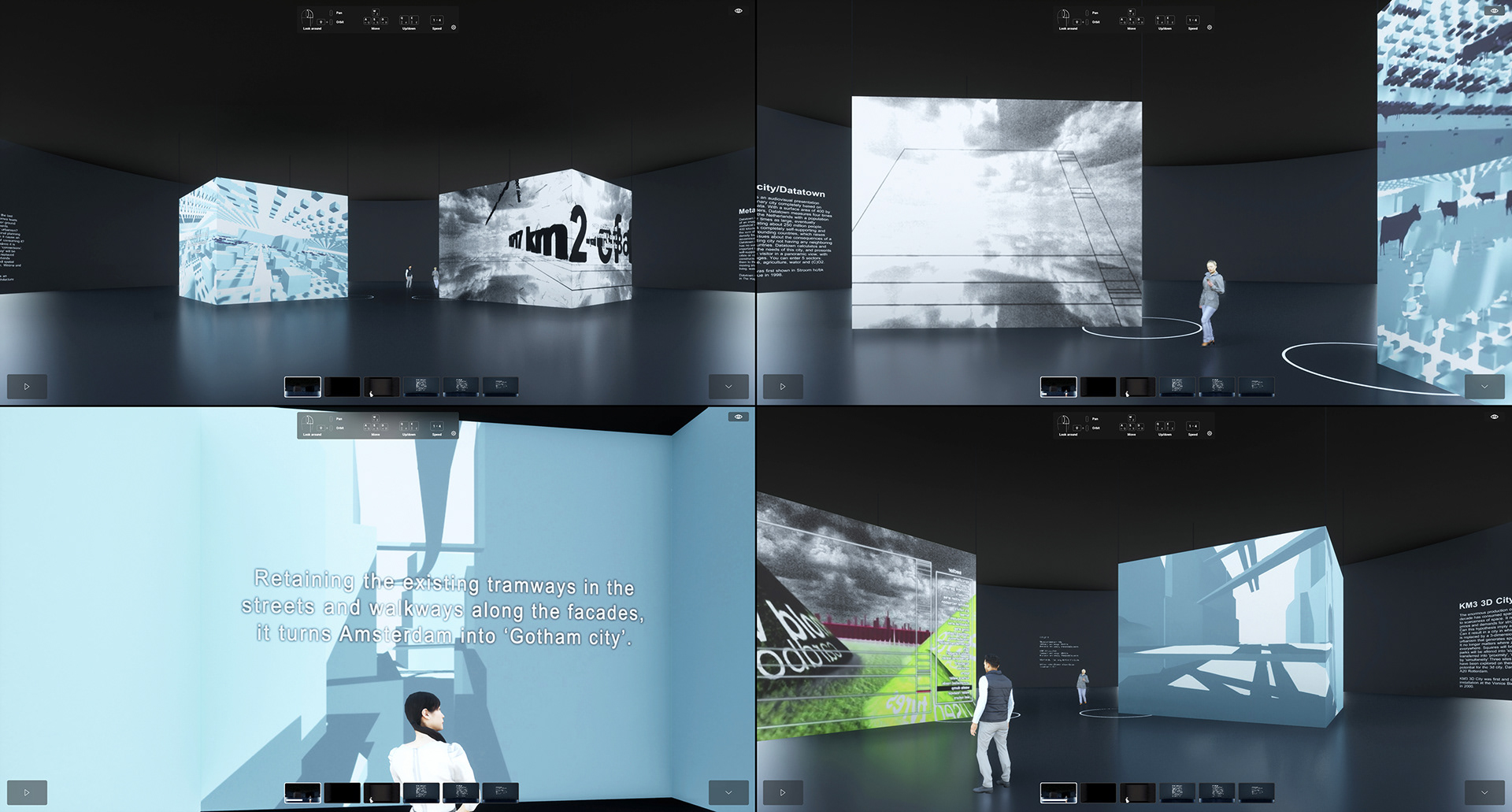Six new tools for a digital archive In addition to the exhibition The Living Archive of a Studio. Het Nieuwe Instituut has invited six designers to develop tools to search, visualise, and utilise the immense digital archive through specific criteria. It could take months to search through all the documents for a specific item in the kilometre-long physical archive, but this can be done in just a few seconds in the digital archive.
The tools have been developed by Alice Bucknell, MVRDV NEXT, Namelok, Giacomo Nanni & Francesca Morini, Carl Rethmann, Johannes Schwartz, and Eline Wieland
The Living Archive of a Studio explores the archive of architecture office MVRDV. Het Nieuwe Instituut displays the MVRDV archive as a living entity in office spaces, rather than in museum galleries. As a working environment, the office is the place where ideas and projects move fluidly back and forth between present, past and future.
Since 1998, MVRDV has collaborated with Wieland & Gouwens to produce highly experimental video animations and installations, leading to public research projects including Metacity / Datatown, KM3, and Manyfacts. Wieland's tool re-enacts these spatial installations in a virtual reality environment, not only allowing visitors and researchers to revisit them, but also to speculate on their continued relevance.
The exhibition can be viewed from 6 November 2021 at Het Nieuwe Instituut Rotterdam. https://mvrdvhni.hetnieuweinstituut.nl/

Metacity/Datatown 1999
Datatown is an audiovisual presentation of an imaginary city completely based on statistical data. With a surface area of 400 by 400 kilometers, Datatown measures four times the size of the Netherlands with a population density four times as large, eventually accommodating about 250 million people. Datatown is completely self-supporting and has no surrounding countries, which raises important issues about the consequences of a self-supporting city not having any neighboring cities or countries. Datatown calculates and constructs the needs of this city, and presents them to the visitor in a panoramic view, with moving images. You can enter 5 sectors: living, waste, agriculture, water and (C)O2.
Datatown was first shown in Stroom hc/bk in The Hague in 1998.
KM3 3D City 2000
The enormous production of buildings in the last decade has consumed space and sometimes leads to scarceness of space. It results in higher ground prices and demands for stronger investments. Can this hypothesis imply anotherkind of urbanism? Can it result in a city in which 2-dimensional planning is replaced by a 3-dimensional one? Can it cause an urbanism that generates space instead of consuming it? It no longer matters where zero level is, since it is everywhere. Squares will be replaced by 'connections', parks will be altered into 'stacks', 'far away' will be transferred into 'proximity', 'order' will be replaced by 'simultaneity'. Three sites in the Netherlands have been explored on their technical and spatial potential for the 3d city. Dam Amsterdam, Weena and A20 Rotterdam.
KM3 3D City was first and only shown as an installation at the Venice Biennale of Architecture in 2000.
CREDITS
Metacity/Datatown 1999
Research and design: MVRDV
Animation and editing: Wieland&Gouwens
KM3 3D City 2000
Research and design: MVRDV
Animation and editing: Wieland&Gouwens
MVRDVHNI: The Living Archive of a Studio
VR tool: Eline Wieland, WielandStudio
Rotterdam © 2021